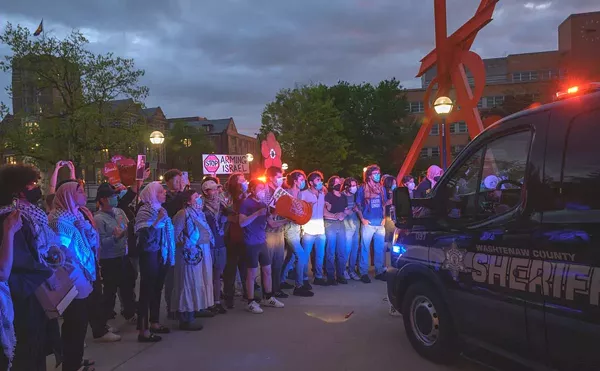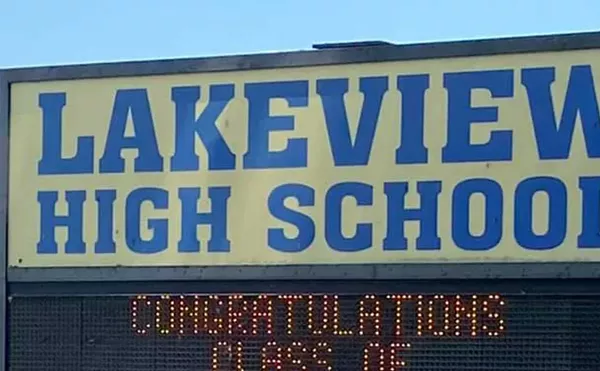
Audio By Carbonatix
[
{
"name": "GPT - Leaderboard - Inline - Content",
"component": "35519556",
"insertPoint": "5th",
"startingPoint": "3",
"requiredCountToDisplay": "3",
"maxInsertions": 100,
"adList": [
{
"adPreset": "LeaderboardInline"
}
]
}
]
Feeling they've been burned in the past, activists are struggling to decide whether to participate in the latest attempt to clean up the Detroit River. They complain that the process has given lip service to public participation but often ignored citizen input.
The U.S. Environmental Protection Agency and Michigan Department of Environmental Quality held a series of meetings recently in an attempt to jump-start the long-stalled process of cleaning contaminated sediments and restoring a wide range of so-called "beneficial uses" to the Detroit River. Fish unsafe to eat, closed beaches, tainted water, lost habitat and other areas are supposed to be addressed by the Detroit River Remedial Action Plan (RAP).
The RAP process, which made great strides when first instituted a quarter century ago, has been largely stalled for the past decade. Two years ago, under the auspices of the International Joint Commission, a group of Americans and Canadians produced a report identifying the problems facing the river and actions required to fix them.
Most of the citizens involved in that effort refused to sign on to the final document, in part because of their concerns that the Department of Environmental Quality, working in concert with industry, was more concerned with protecting the status quo than with taking serious cleanup action.
After nearly virtually no progress for two years, the EPA and DEQ are seeking to revitalize the process.
"There have been a lot of years of planning," said the EPA's Jo-Lynn Traub during a meeting last Tuesday at Historic Fort Wayne. "We don't need to talk anymore."
A committee charged with devising the final structure of the RAP implementation group was to be formed this week, with a Monday, Oct. 12 deadline set for volunteers to sign up.
But as the deadline approached, activist Mary Ginnebaugh of Wyandotte remained undecided about participating. After years of working on the previous RAP stage -- which saw most of the citizen participants walking out in protest -- Ginnebaugh and others are hesitant and suspicious.
"It looks a lot like the same thing as before, the same players at the table, and we got trashed before," said Ginnebaugh, president of the group Downriver Citizens for a Safe Environment. "I see a little glimmer of change, but I'm not sure there is enough light to sign on to it."
All involved in the process acknowledge that citizen participation is crucial if progress is to be made, but those who have been involved previously remain skeptical.
One problem is the insistence by most government and industry participants that the group not be incorporated as a legal entity so that it can remain "flexible."
Activists such as Cheryl Minniefield of the Detroit River Remedial Action Council see that as a way to avoid assigning responsibility, and are advocating that the group be incorporated as a legal nonprofit to increase both accountability and the ability to receive grants directly from government agencies and private foundations.
What remains to be seen is whether enough like-minded activists go to the table to see their views implemented as the process is renewed.





